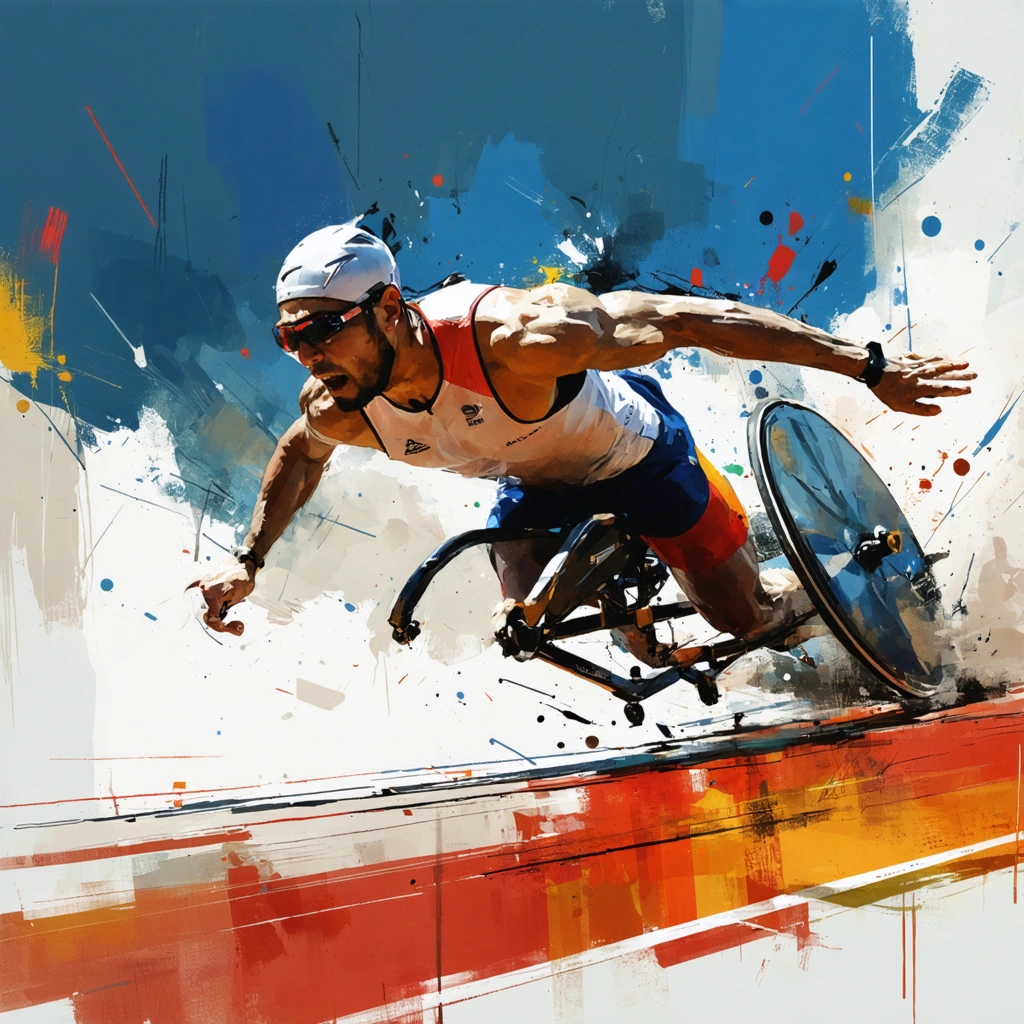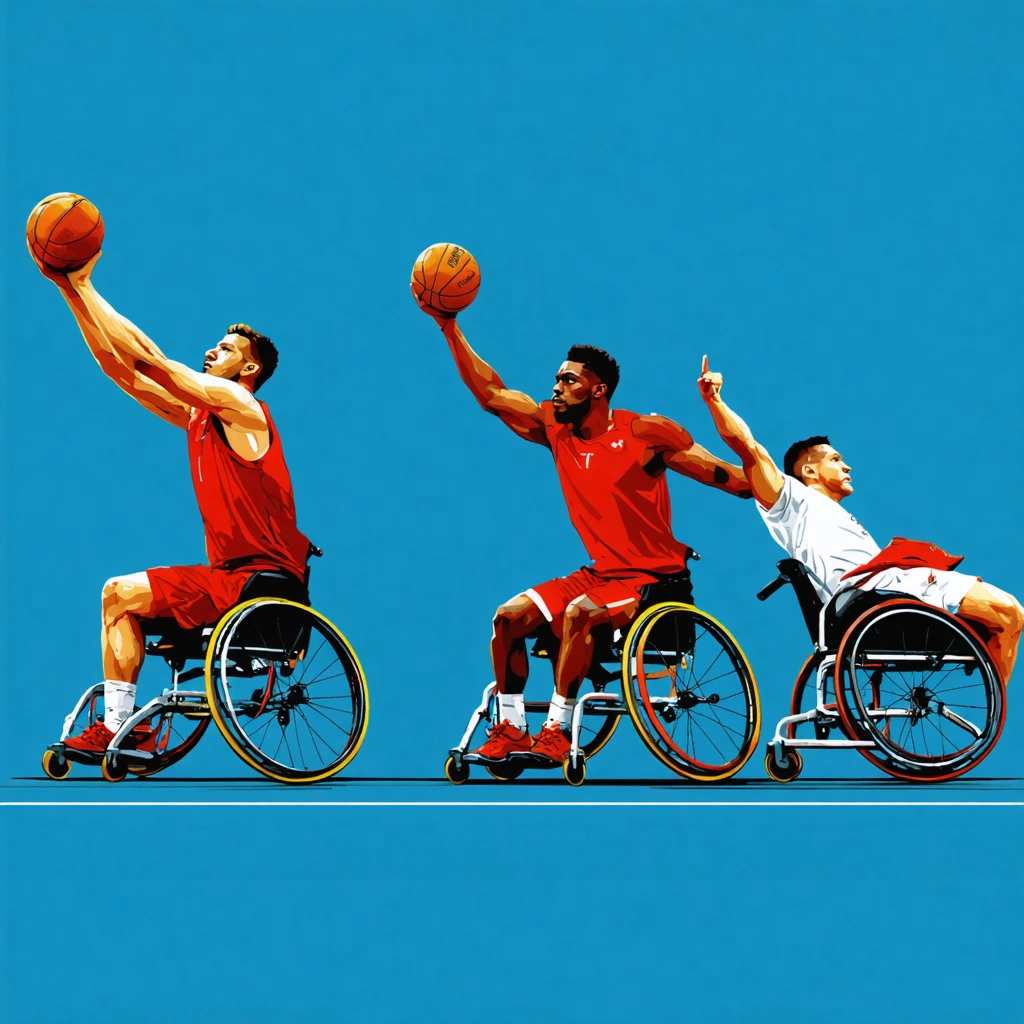When the World Watches, True Grit Emerges
Imagine the roar of the crowd as an athlete, racing down the track in atletismo paralímpicos, pushes beyond what many thought possible. The Paralympic Games are not just a showcase of competition; they're a global celebration of resilience, determination, and extraordinary skill. Yet, despite their growing popularity, the stories behind these athletes often remain overshadowed by traditional Olympic narratives. People may recognize the feats in passing, but few fully grasp the depth of training, sacrifice, and sheer willpower that drive these champions.
Take powerlifting paralympics, for example: athletes defying physical limitations to hoist weights that would challenge even the strongest able-bodied competitors. Or consider the high-speed drama of tenis en silla de ruedas paralímpicos, where wheelchair-bound players display agility and precision that can rival any top-level tennis match. And who could overlook the tactical brilliance and teamwork in baloncesto en silla de ruedas paralímpicos, a sport that combines speed, strength, and strategy on wheels?
Beyond the Records: Why Paralympic Sports Matter
It’s easy to admire the medals and world records, but what about the stories beneath the surface? The world of Paralympic sports is often misunderstood, sometimes even underestimated. The “breaking jogos olímpicos” moment—when Paralympic athletes shatter preconceived limits—happens every single day on tracks, courts, and lifting platforms. Yet, these moments are frequently lost amid the larger Olympic spectacle or misrepresented by stereotypes.
This lack of recognition isn’t just about visibility; it affects funding, media coverage, and support structures that athletes desperately need. The question arises: how can we truly appreciate athletic excellence if we only see a fraction of it? How can society celebrate resilience if it overlooks those who exemplify it most vividly?
Unveiling the Power and Passion of Paralympic Athletics
This article aims to peel back the curtain on the world of Paralympic athletics, revealing the grit and grace behind each competition. We’ll explore the diverse disciplines—from the explosive sprints in atletismo paralímpicos to the dynamic rallies in tenis en silla de ruedas paralímpicos. We’ll dive into the intensity of baloncesto en silla de ruedas paralímpicos and the raw power on display in powerlifting paralympics.
Along the way, you’ll discover how these sports challenge not only physical boundaries but societal perceptions. You’ll meet stories that inspire and statistics that astonish. Whether you’re a sports enthusiast, a supporter of adaptive athletics, or simply curious about what fuels these extraordinary athletes, this journey promises insights that resonate far beyond the track or court.
So, buckle up for a deep dive into the heart of Paralympic grit—a realm where determination meets opportunity, and where every moment on the global stage is a testament to human spirit and skill.

Paralympic Grit: Athletic Triumphs and the Spirit of Paralympic Athletics
What Makes Paralympic Athletics a Showcase of Resilience and Skill?
Paralympic athletics is a powerful demonstration of human resilience, determination, and exceptional skill on a global stage. Unlike conventional athletics, it encompasses a wide range of events tailored for athletes with various physical impairments, highlighting not only their competitive spirit but also advances in adaptive sports technology and training methodologies.
The athletes' ability to overcome significant physical challenges through rigorous training, innovative equipment, and mental toughness creates an inspiring narrative that resonates worldwide. From track races for wheelchair users to field events for amputees, every competition underscores how sport transcends limitations and celebrates human potential.
How Do Different Paralympic Sports Highlight Diverse Skills and Athleticism?
Within the Paralympic framework, sports such as atletismo paralímpicos (Paralympic athletics), tenis en silla de ruedas paralímpicos (wheelchair tennis), and baloncesto en silla de ruedas paralímpicos (wheelchair basketball) showcase a broad spectrum of athletic skills. Each sport demands unique physical abilities, strategic thinking, and teamwork, which emphasize both individual and collective accomplishments.
- Atletismo Paralímpicos: This includes track and field events adapted for athletes with different classifications. Speed, endurance, and precision are key, with athletes often using specialized prosthetics or racing wheelchairs to maximize performance.
- Tenis en Silla de Ruedas Paralímpicos: Wheelchair tennis requires agility, upper body strength, and tactical skill. The sport has grown in visibility, with top athletes competing in Grand Slam tournaments and inspiring new generations.
- Baloncesto en Silla de Ruedas Paralímpicos: This fast-paced team sport combines wheelchair maneuverability, shooting accuracy, and coordinated team play, making it one of the most popular Paralympic sports globally.
What Role Does Powerlifting Play in the Paralympic Movement?
Powerlifting Paralympics is a strength-based discipline where athletes with physical impairments demonstrate remarkable upper body power through bench press competitions. It stands as a testament to the athletes' rigorous training regimens and their ability to push beyond perceived limits.
This sport not only contributes to the diversity of the Paralympic program but also challenges stereotypes about disability and strength, offering inspiring stories of triumph and dedication.
How Are Emerging Sports Like Breaking Integrated into the Paralympic and Olympic Movements?
The inclusion of new and dynamic sports such as breaking jogos olímpicos (breakdancing in the Olympic Games) represents the evolving nature of global multisport events. While breaking is currently an Olympic sport, discussions are ongoing about its potential adaptation for Paralympic competition.
Integrating breaking or similar disciplines could bring fresh opportunities for athletes with disabilities, leveraging creativity, rhythm, and physical control. This reflects the broader commitment of the Paralympic movement to innovate and expand inclusivity across all types of athletic expression.
Why Is Understanding Paralympic Sports Important for Society?
Appreciating the achievements in atletismo paralímpicos and other Paralympic disciplines helps shift societal perceptions about disability. It promotes awareness of accessibility, encourages adaptive sports participation, and inspires policy changes to support athletes with impairments.
Moreover, the global audience engagement in events like wheelchair tennis and basketball fosters a sense of unity and respect, illustrating that sport is a universal language of resilience and excellence.
Key Takeaways on Paralympic Athletic Triumphs
- Paralympic athletics highlight the intersection of human grit, technology, and adaptive sports science.
- Sports such as wheelchair tennis and basketball demonstrate the strategic and physical complexity of Paralympic competition.
- Powerlifting showcases strength and determination, challenging traditional notions of physical capability.
- The inclusion of emerging sports like breaking may broaden the Paralympic program's diversity and appeal.
- Understanding and supporting Paralympic sports fosters social inclusion and inspires future generations.
By exploring the multifaceted world of Paralympic athletics, we gain insight into how sport redefines human limits and celebrates the indomitable spirit that drives athletes to achieve greatness on the world stage.

